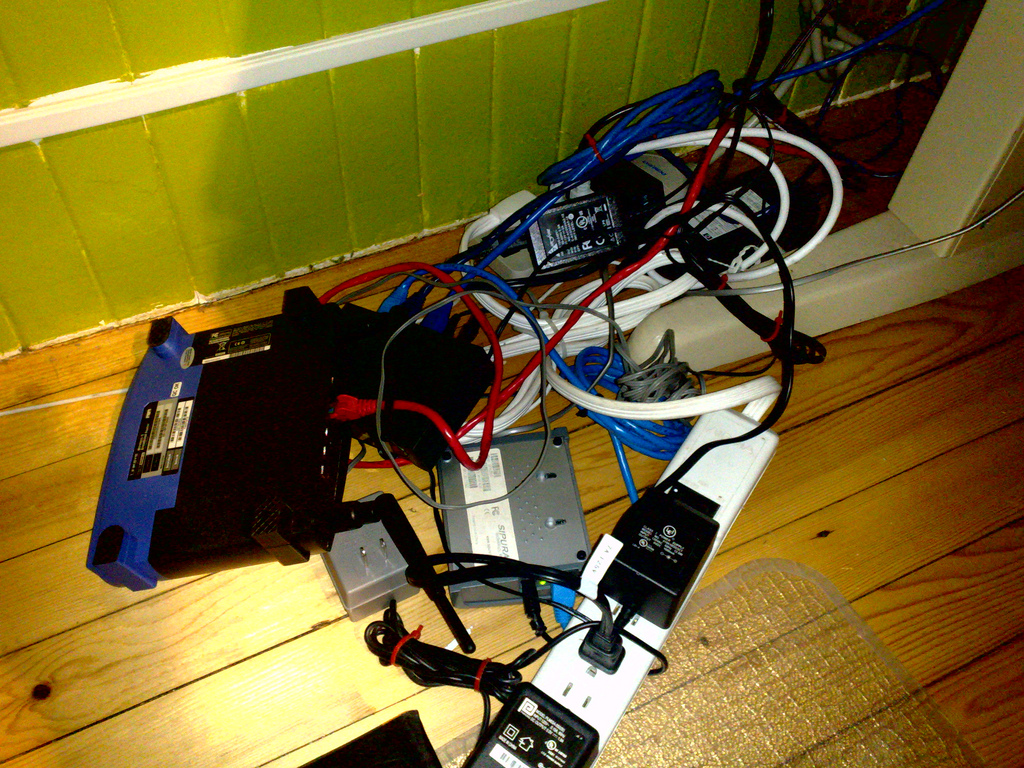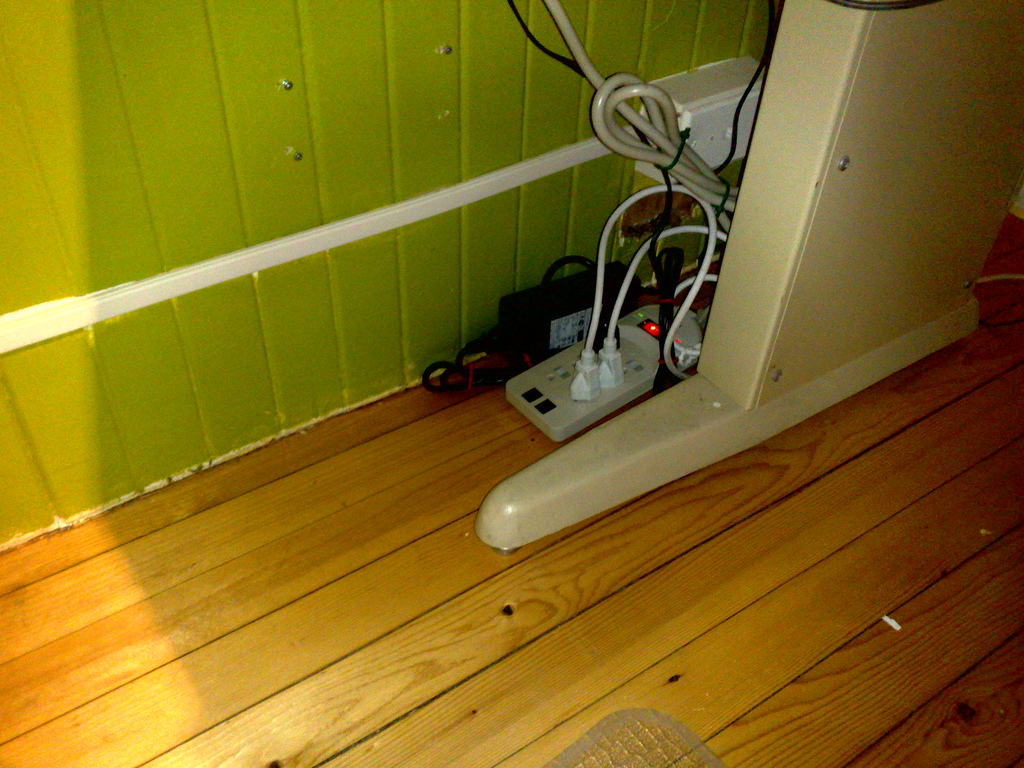For the last seven years I’ve been a happy and enthusiastic voice-over-IP user: since I moved into the office here at 84 Fitzroy Street in 2003, all of my telephone calls have been handled by the excellent open source Asterisk system.
So when you call me at 892-2556, it’s Asterisk that’s answering the phone (and possibly taking a message). And when I’m in Europe it’s Asterisk that’s taking your call, making a call to my European mobile, and conferencing the two together, giving you the illusion that I never left town.
It’s also Asterisk that’s answered more than 5,000 calls for public transit information in Charlottetown.
Until this morning, calls from Asterisk to me here in the office got routed from my Asterisk server downstairs over Ethernet to a switch and on to a Sipura SIP device into which a regular old Nortel telephone was plugged.
This system worked well, had great call quality, and I was generally happy with it.
In recent years, however, I’ve been having more (and longer) conference calls with clients, and the ergonomics of cradling a phone in my neck meant I needed to find a better solution; I found it in Telephone, a simple and elegant Mac VOIP client that lets me route VOIP calls into my Macbook and talk and listen using a headset.
This is much better ergonomically, lets me answer calls anywhere I have Internet and has the additional benefit of allow me to clear a lot of cables and other devices out of my office.
Here’s what the space under the left side of my office desk looked like before I cleaned out everything required to run the regular old telephone:

And here’s the same space after I cleared everything telephone-related out:

Without the telephone (and its power brick) I didn’t need the SIP device (along with its power brick), I didn’t need the switch (along with its power brick) and I didn’t need to run Ethernet into the office at all.
My next step? I’m thinking about going completely digital, converting 892-2556 from an Eastlink POTS line into a digital line riding in on the silverorange T1 like the 367-3694 transit information line. I’ve resisted this for a long time (to the consternation of my landlords, who had to go to great pains to keep the analog box attached to the back of the building) but, on reflection, my resistance seems silly, especially because going digital means I would finally be able to have incoming calls identified (the old Digium analog board could never seem to handled call display data properly).
 I am
I am
Comments
I’ve been using an ip only
I’ve been using an ip only sip trunk from a provider in Edmonton for while now. No pots lines means no telco price gouging. I pay $2.50 a month for my number and 1.1 cents a minute for all calls in north america.
Since the provider is only 15-20ms away call quality is excellent. From my asterisk server I route calls to a linksys/sipura spa-2102 2 line ATA. This lets my wife use the phone as she expects a normal phone to operate. For my office I use a polycom 403 sip handset I picked up for next to nothing.
Aside from a few dialplan issues in the first few days it’s been hassle free. Analog is dead.
I take it that you still use
I take it that you still use Asterisk - but a native sip client on your computer. Can you tell me more about your Asterisk setup - I seriously looking at setting one up. So any advice you could provide would be welcomed.
Danny
Yes, still use Asterisk, and
Yes, still use Asterisk, and I use the Telephone application on my Mac which is a native SIP client. Works well.
Add new comment